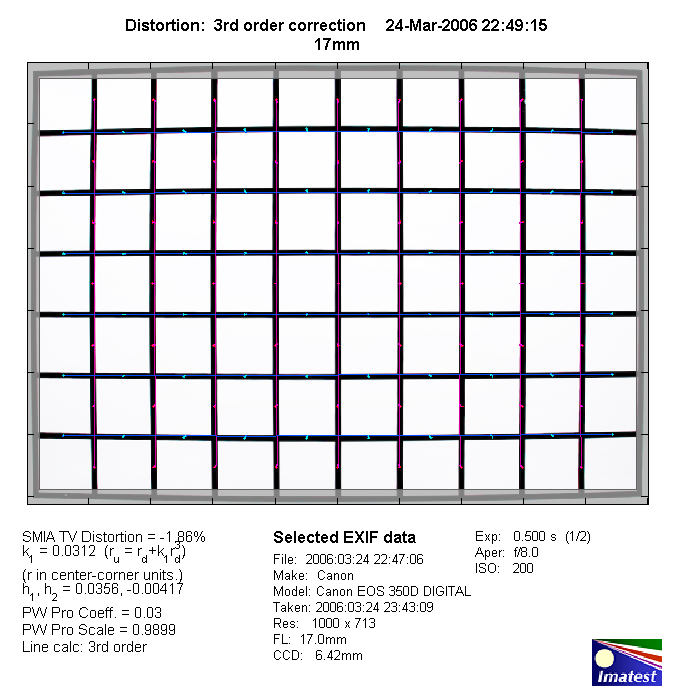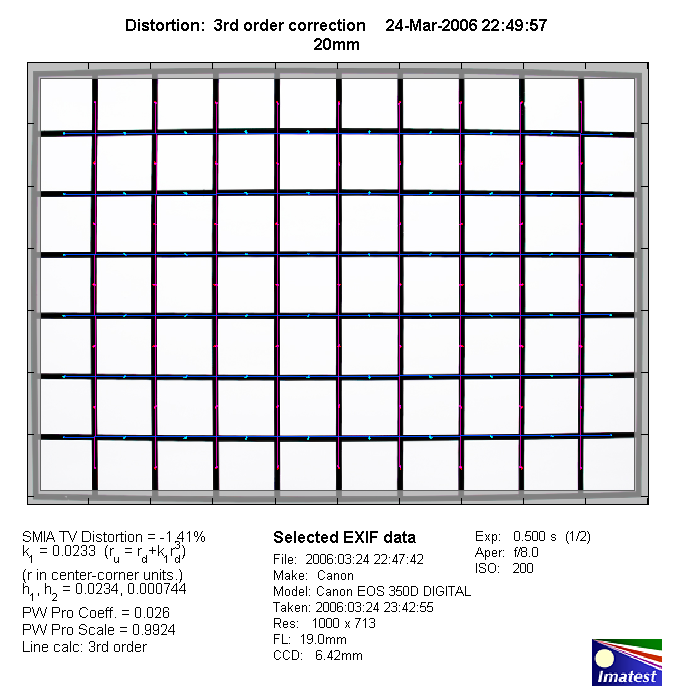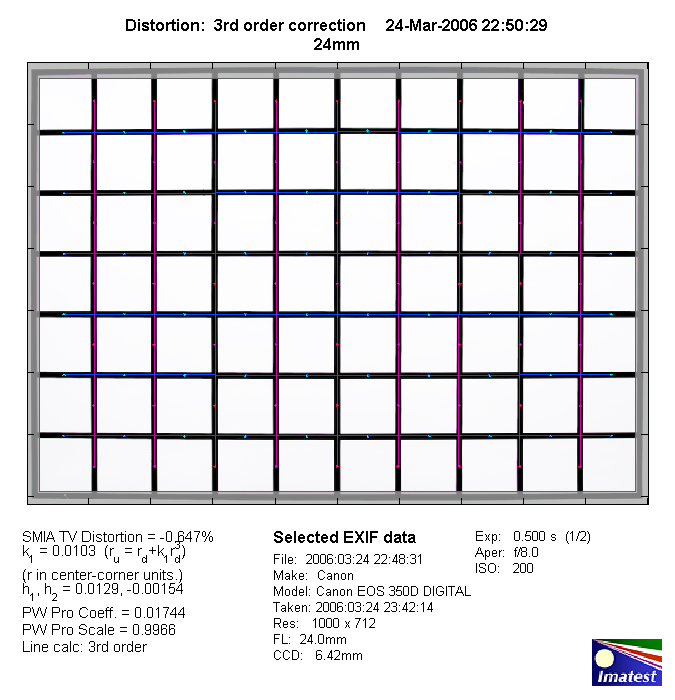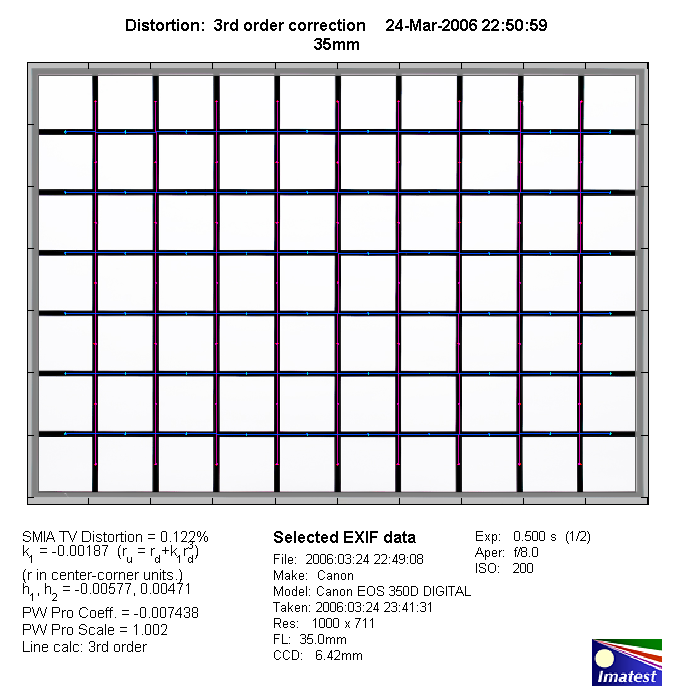|
Canon EF 17-35mm f/2.8 USM L - Review / Lab Test Report - Analysis |
|
Lens Reviews -
Canon EOS (APS-C)
|
|
Page 2 of 2

Distortion
As usual this ultra-wide zoom lens shows some very strong barrel
distortion at 17mm easing towards the long end (35mm) where the
lens is basically free of distortion.
17mm:

20m:

24mm:

35mm:

You should probably expect more distortions towards closer focus distances.
Vignetting
The EF 17-35mm f/2.8 USM L showed a very unusual vignetting characteristic.
On an APS-C DSLR it can take advantage of a sweet spot behavior
but at 17mm the lens already showed an optimal behavior with no measurable
improvement when stopping down (yes, I repeated the test row to make sure).
Due to the decreasing natural vignetting there's a little less shading
at 24mm. At 35mm the issue is marginally more pronounced at f/2.8 but negligible
beyond.

MTF (resolution)
In the MTF lab the EF 17-35mm f/2.8 USM L showed a quite decent behavior but
also a couple of glitches.
The worst spot is clearly the 17mm setting
especially towards the extreme borders. Normally the "extreme border"
performance is not provided for full frame lenses but the exception
was necessary here to point out the weakness of this lens. The extreme
borders @ 17mm are smeared at f/2.8 which very little detail
left. Stopping down helps to lift the resolution figures but the
extreme borders remain somewhat substandard.
The center performance is in sharp contrast to the borders - the MTF
figures are excellent here even at wide-open aperture.
At 20mm and 24mm the border quality is substantially better with
good quality at f/2.8 increasing to excellent figures
by f/5.6. There's a marginal decrease in quality at 35mm but the
center remains excellent and the borders still reach very
good figures at medium aperture settings.
An annoying characteristic of the lens is the focus shift when stopping
down (residual spherical aberrations). At long focus distances the
problem is hidden within the pronounced depth-of-field but with close-ups
you may run into focus errors when relying on AF (the focus plane moves
towards the camera). The lens also showed a quite pronounced field
curvature (the focus plane bends towards the edges).
Please note that the MTF results are not directly comparable across the different systems!
Below is a simplified summary of the formal findings. The chart shows line widths per picture height (LW/PH) which can be taken as a measure for sharpness.
If you want to know more about the MTF50 figures you may check out the corresponding Imatest Explanations
Chromatic Aberrations (CAs)
Typical for most ultra-wide zoom lenses CAs (color shadows at harsh contrast transitions)
are quite pronounced with this lens but they remain in line with what we've seen from
similar lenses. As usual the issue is decreases towards the long end of the (ultra-wide)
zoom range.

Verdict
During my days with this lens I was actually quite fond of the performance of the Canon
EF 17-35mm f/2.8 USM L but I usually limited the usage to focal lengths beyond 20mm.
A good idea also confirmed by the MTF tests which showed a quite poor border
resolution at 17mm. However, in the 20-35mm range the performance is very good and
comparable to what we've seen from modern Canon ultra-wide zooms. Same goes for the
other image characteristics. The barrel distortions are very pronounced towards the
wide end of the zoom range but pretty decent otherwise. Typical for most full frame
lenses vignetting is no big issue on an APS-C DSLR. CAs are quite high but about average
for a lens in this class. All-in-all the lens had its time but there're better
alternatives available today.
|